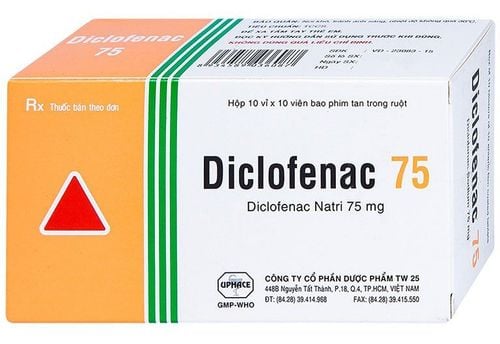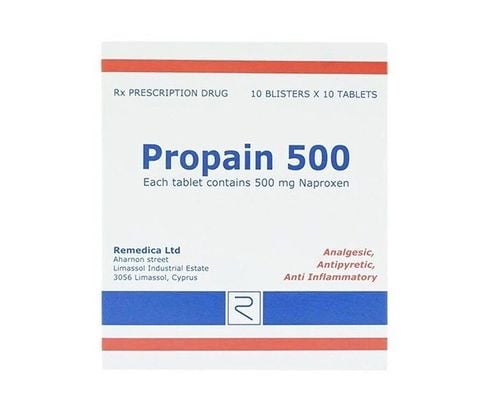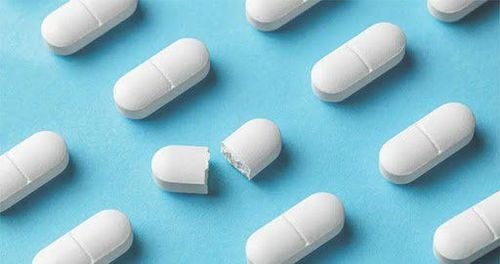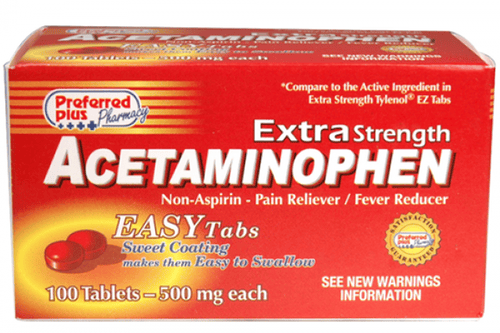This is an automatically translated article.
Zandol drug has main ingredients including Tramadol Hydrocholoride and Paracetamol. Zandol is commonly used to treat mild to moderate pain. The necessary information about the composition, uses, dosage and side effects of Zandol medicine will help patients and their families improve treatment results.
1. What is Zandol?
Zandol drug is prepared under film-coated tablets, with the main ingredients including:
Active ingredients:
Tramadol Hydrocholoride content 37.5 mg. Paracetamol content 375 mg. Excipients:
Sodium starch glycolate, Magnesium stearate, Avicel PHI01, Starch 1500, Povidon K30, Colloidal silicon dioxide A200, Hydroxypropyl methylcellulose 15cP, Hydroxypropyl methylcellulose 6cP, Talc, Titandioxide, Polyethylene glycol 6000, Sicovit red, Tartrazin lake color just enough 1 film coated tablet. In which:
Tramadol Hydrocholoride is a synthetic analgesic of the Opioid family, with central analgesic effect, and can be as addictive as Morphine. Tramadol Hydrocholoride reduces the re-entry of Norepinephrine and Serotonin into cells through the binding of the parent and metabolite of Tramadol, O-desmethyltramadol (M1), to the neuronal μ-receptor.
Paracetamol (Acetaminophen) belongs to the group of non-steroidal anti-inflammatory drugs (NSAIDs). Paracetamol is an active metabolite of Phenacetin, acting on Cyclooxygenase - Prostaglandin of the central nervous system causing vasodilation and increased peripheral blood flow, thereby helping the body to radiate heat and cool down. However, the central analgesic mechanism of Paracetamol has not been precisely determined.
2. What disease does Zandol treat?
Zandol is indicated for the treatment of mild to moderate pain symptoms seen in headache or migraine, musculoskeletal pain, toothache in dental diseases, dysmenorrhea, dysmenorrhea, pain after surgery, procedure or pain after injury...3. Contraindications of Zandol
Hypersensitivity to any ingredient in Zandol. History of hypersensitivity to other medicinal products containing Tramadol Hydrocholoride or Paracetamol. History of hypersensitivity to other NSAIDs or opioids. Patients with deficiency of the enzyme Glucose 6 Phosphate Dehydrogenase - G6PD. The patient is being treated with a Monoamine Oxidase - MAO inhibitor. People with a history of intoxication with alcohol, narcotics, sleeping pills, central analgesics and psychotropic drugs. Severe respiratory failure. People with severe liver or kidney dysfunction. Children under 12 years old.
4. Dosage and how to use Zandol
Adults:
Dose: Take 1-2 tablets/time every 6 hours if symptoms are not relieved. The maximum dose should not exceed 8 tablets in a day. Children:
Recommended use of Zandol drugs. Patients with impaired renal function:
Adjust dose based on Creatinine clearance (CrCl):
CrCl < 30 ml/min: Take no more than 2 tablets every 12 hours. Note: Zandol should be taken after meals.
5. Notes when using Zandol
5.1 Side effects encountered when using Zandol Treatment with Zandol in high doses or for a long time can cause side effects such as:
Common: Dizziness, dizziness, drowsiness and nausea. Uncommon: Gastrointestinal disorders such as dry mouth, anorexia, abdominal pain, dyspepsia, flatulence, constipation, diarrhea, asthenia, headache and fatigue. Rare: Cardiovascular symptoms such as arrhythmia, palpitations, chest pain, increased or decreased blood pressure. Neurological disorders such as convulsions, muscle tension, migraine, tinnitus and decreased vision. Upper or lower gastrointestinal bleeding, impaired liver function. Withdrawal syndrome, depression, weight loss, dyspnea, urinary disorders, anemia, chills and syncope. Stevens Johnson syndrome, Serotonin syndrome, Lyell syndrome, and toxic epidermal necrolysis. Allergic reactions and anaphylaxis. Blood disorders such as leukopenia, neutropenia, erythrocytopenia and thrombocytopenia. The drug should be discontinued as soon as the above side effects or any other unusual symptoms are detected after using Zandol. At the same time, the patient and family should promptly notify the doctor or go to the medical facility for timely treatment.
5.2 Notes on the use of Zandol in subjects Be careful when using Zandol in the elderly and in children under 12 years of age. Patients with a history of or are suffering from epilepsy, convulsions, acute respiratory failure, severe liver and kidney dysfunction. Pregnancy or breast-feeding: Practical studies have not determined the safety of Tramadol Hydrocholoride or Paracetamol when used in pregnant and lactating women. Therefore, caution should be exercised when deciding to use Zandol in these subjects. Drivers or machine operators may experience symptoms such as dizziness, lightheadedness or drowsiness after using Zandol.
6. Zandol drug interactions
6.1 Interactions with other drugs In relation to Tramadol Hydrocholoride:
Serotonin reuptake inhibitors (SSRIs), tricyclic compounds (TCAs), other Opioids, MAOIs, tranquilizers, Naloxone when taken with Zandol may increase the risk of seizures. Carbamazepine, Fluoxetin, Amytriptylin, Paroxetin reduce the metabolism of Tramadol Hydrocholoride and reduce the analgesic effect of Zandol. Quinidine increases the content of active ingredient Tramadol Hydrocholoride in Zandol. Co-administration of Warfarin and Zandol may interfere with blood clotting, increasing the risk of bleeding. Regarding Paracetamol:
Avoid co-administration of Zandol and Coumarin or Indandion derivatives because it may increase the risk of bleeding. Caution should be exercised when Zandol is used in combination with phenothiazines or other hypothermia because it may cause uncontrolled hypothermia. Phenytoin, Barbiturates, Isoniazid and Carbamazepine increase the hepatotoxicity of Zandol. Interactions with Beverages
Avoid using Zandol in patients with a history of alcoholism or heavy use of alcohol because it may increase the risk of hepatotoxicity. Above is basic information and unwanted effects of Zandol drug. In order to bring the best treatment results for themselves and their families, before using Zandol, patients should carefully read the instructions for use and strictly follow the treatment instructions of the treating doctor.
Please dial HOTLINE for more information or register for an appointment HERE. Download MyVinmec app to make appointments faster and to manage your bookings easily.













